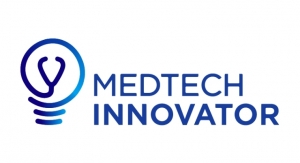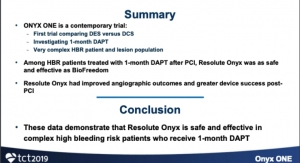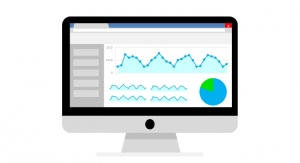Maria Shepherd, President and Founder, Medi-Vantage11.04.19
Sure, most are startups—but not all.
There were some brilliant ideas presented at The MedTech Conference (AdvaMed’s annual meeting) on Sept. 23-25 in Boston and the Connected Health Conference, also in Boston, put on by Partners Healthcare (Oct. 16-18). From telehealth kiosks to personalized chatbots, there is real change being brought to the healthcare industry by an array of talented people.
In medtech, digital technologies are empowering the collection of novel data sets, aggregation of data sets, sophisticated data analysis possibilities, and augmented intelligence. These provide new insights into individual and population health; continuous, real-time, and remote patient monitoring; care outside of traditional settings; superior diagnoses through wearable and implantable technologies; outcomes-based care plans; increases in the efficient management of population health; autonomous and remote interventions; improved clinical decision support; and more.
Why This Is Important
Medtech plays a role in developing engaged and digitally supported healthcare professionals. While some healthcare professionals are adapting to new ways of practicing and are recognizing the benefits of digital healthcare for themselves and their patients, most countries report that healthcare professionals are not employing the full potential and support of digital health technology.1 This presents an opportunity where we, as an industry, can help healthcare professionals become new and true advocates of digital health, communicate its benefits to peers, and provide better care for patients.
I was skeptical of the statistics in the report from Phillips on digital health use in medical practices today (Table 1). There is a prevalent assumption that healthcare professionals feel electronic medical records (EMRs) add administrative tasks to their clinical workflow. In the report, it is noted healthcare professionals believe EMRs help deliver three of the four pillars of the Quadruple Aim1: better health outcomes, improved patient experience, and improved staff experience. In addition, 57 percent of healthcare professionals reported their practice has been positively affected through access to a patient’s full medical history.
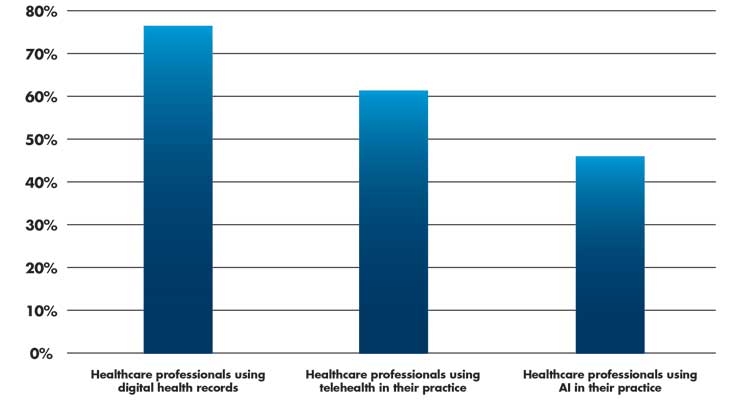
Table 1: Percentage of healthcare professionals using digital health.1
AI in Healthcare
ConversaHealth presented at the Connected Health Conference about how their system is used to engage with patients during their care. The Conversa Conversation Platform enables healthcare organizations to deliver the right conversations at the right time for all patients, at scale (Table 2). The firm is transforming the Patient – Care Team interaction—formerly reactive and episodic—to a relationship the company believes is proactive, continuous, and collaborative. Its goal is to change how and when healthcare happens.
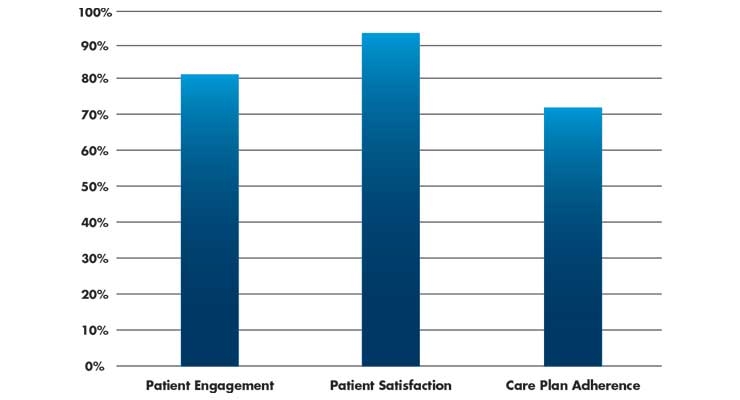
Table 2: Conversa statistics for patient engagement, satisfaction, and compliance.2
The Conversa AI technology utilizes the firm’s proprietary clinical library, which covers chronic care, pre- and post-op surgical care, medication compliance, and wellness and prevention scenarios. Sure, it is a chatbot, but it is a very engaging one that “understands” the unique patient experience and is scalable to the entire patient population of the hospital.
A Telehealth Kiosk
H4D, a French company, also presented at the Connected Health Conference, presenting the benefits of its patented Class II medical device—the Consult Station. The Consult Station is beginning its launch at large companies. Through the kiosk, a physician meets with the user, listens to him or her, and assesses the person’s health measurements. At the conclusion of the virtual meeting, the physician can, if necessary, write a prescription, which can be printed from the kiosk directly. The Consult Station can take the user’s blood pressure, pulse rate, and EKG; perform vision and audiology tests; measure SPO2; and obtain height, weight, BMI, and temperature data. In the future, the kiosk will be equipped with a blood glucose meter, stethoscope, and dermatoscope. Like Conversa, H4D has shared impressive statistics regarding usage (Table 3).
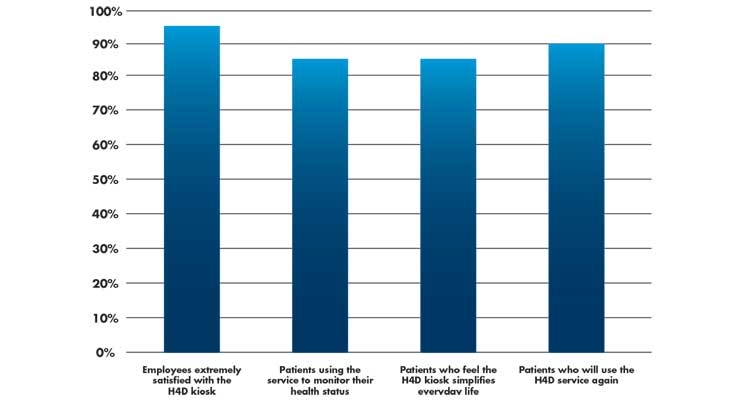
Table 3: 2016 survey of employees with access to the H4D in their workplace.3
The Medi-Vantage Perspective
These advances in digital health are remarkable because they address many of the issues we have as patients and healthcare providers. For patients, the solutions enhance access to care instead of requiring them to schedule a trip to the doctor’s office, potentially waiting for an hour or more once there, and then waiting again once placed into an observation room, all while not feeling well. For healthcare providers, the technology enables more valuable time to be spent with patients who truly require it, helps to prevent burnout, and aids with non-compliant patient management. Both of the examples provided are scalable—a critical factor in making them work well for busy patients and providers. Unfortunately, one issue still remains—reimbursement—and the desire of the physician to retain the patient at all costs.
References
Maria Shepherd has more than 20 years of experience in medical device marketing in small startups and top-tier companies. After her industry career, including her role as VP of marketing for Oridion Medical, where she boosted the company valuation prior to its acquisition, director of marketing for Philips Medical, and senior management roles at Boston Scientific Corp., she founded Medi-Vantage. Medi-Vantage provides marketing, business strategy, and innovation research for the medical device, diagnostic, and digital health industries. The firm quantitatively and qualitatively sizes and segments opportunities, evaluates new technologies, provides marketing services, and assesses prospective acquisitions. Shepherd has taught marketing and product development courses and is a member of the Aligo Medtech Investment Committee (www.aligo.com). She can be reached at 855-343-3100. Visit her website at www.medi-vantage.com.
There were some brilliant ideas presented at The MedTech Conference (AdvaMed’s annual meeting) on Sept. 23-25 in Boston and the Connected Health Conference, also in Boston, put on by Partners Healthcare (Oct. 16-18). From telehealth kiosks to personalized chatbots, there is real change being brought to the healthcare industry by an array of talented people.
In medtech, digital technologies are empowering the collection of novel data sets, aggregation of data sets, sophisticated data analysis possibilities, and augmented intelligence. These provide new insights into individual and population health; continuous, real-time, and remote patient monitoring; care outside of traditional settings; superior diagnoses through wearable and implantable technologies; outcomes-based care plans; increases in the efficient management of population health; autonomous and remote interventions; improved clinical decision support; and more.
Why This Is Important
Medtech plays a role in developing engaged and digitally supported healthcare professionals. While some healthcare professionals are adapting to new ways of practicing and are recognizing the benefits of digital healthcare for themselves and their patients, most countries report that healthcare professionals are not employing the full potential and support of digital health technology.1 This presents an opportunity where we, as an industry, can help healthcare professionals become new and true advocates of digital health, communicate its benefits to peers, and provide better care for patients.
I was skeptical of the statistics in the report from Phillips on digital health use in medical practices today (Table 1). There is a prevalent assumption that healthcare professionals feel electronic medical records (EMRs) add administrative tasks to their clinical workflow. In the report, it is noted healthcare professionals believe EMRs help deliver three of the four pillars of the Quadruple Aim1: better health outcomes, improved patient experience, and improved staff experience. In addition, 57 percent of healthcare professionals reported their practice has been positively affected through access to a patient’s full medical history.

Table 1: Percentage of healthcare professionals using digital health.1
AI in Healthcare
ConversaHealth presented at the Connected Health Conference about how their system is used to engage with patients during their care. The Conversa Conversation Platform enables healthcare organizations to deliver the right conversations at the right time for all patients, at scale (Table 2). The firm is transforming the Patient – Care Team interaction—formerly reactive and episodic—to a relationship the company believes is proactive, continuous, and collaborative. Its goal is to change how and when healthcare happens.

Table 2: Conversa statistics for patient engagement, satisfaction, and compliance.2
The Conversa AI technology utilizes the firm’s proprietary clinical library, which covers chronic care, pre- and post-op surgical care, medication compliance, and wellness and prevention scenarios. Sure, it is a chatbot, but it is a very engaging one that “understands” the unique patient experience and is scalable to the entire patient population of the hospital.
A Telehealth Kiosk
H4D, a French company, also presented at the Connected Health Conference, presenting the benefits of its patented Class II medical device—the Consult Station. The Consult Station is beginning its launch at large companies. Through the kiosk, a physician meets with the user, listens to him or her, and assesses the person’s health measurements. At the conclusion of the virtual meeting, the physician can, if necessary, write a prescription, which can be printed from the kiosk directly. The Consult Station can take the user’s blood pressure, pulse rate, and EKG; perform vision and audiology tests; measure SPO2; and obtain height, weight, BMI, and temperature data. In the future, the kiosk will be equipped with a blood glucose meter, stethoscope, and dermatoscope. Like Conversa, H4D has shared impressive statistics regarding usage (Table 3).

Table 3: 2016 survey of employees with access to the H4D in their workplace.3
The Medi-Vantage Perspective
These advances in digital health are remarkable because they address many of the issues we have as patients and healthcare providers. For patients, the solutions enhance access to care instead of requiring them to schedule a trip to the doctor’s office, potentially waiting for an hour or more once there, and then waiting again once placed into an observation room, all while not feeling well. For healthcare providers, the technology enables more valuable time to be spent with patients who truly require it, helps to prevent burnout, and aids with non-compliant patient management. Both of the examples provided are scalable—a critical factor in making them work well for busy patients and providers. Unfortunately, one issue still remains—reimbursement—and the desire of the physician to retain the patient at all costs.
References
Maria Shepherd has more than 20 years of experience in medical device marketing in small startups and top-tier companies. After her industry career, including her role as VP of marketing for Oridion Medical, where she boosted the company valuation prior to its acquisition, director of marketing for Philips Medical, and senior management roles at Boston Scientific Corp., she founded Medi-Vantage. Medi-Vantage provides marketing, business strategy, and innovation research for the medical device, diagnostic, and digital health industries. The firm quantitatively and qualitatively sizes and segments opportunities, evaluates new technologies, provides marketing services, and assesses prospective acquisitions. Shepherd has taught marketing and product development courses and is a member of the Aligo Medtech Investment Committee (www.aligo.com). She can be reached at 855-343-3100. Visit her website at www.medi-vantage.com.




